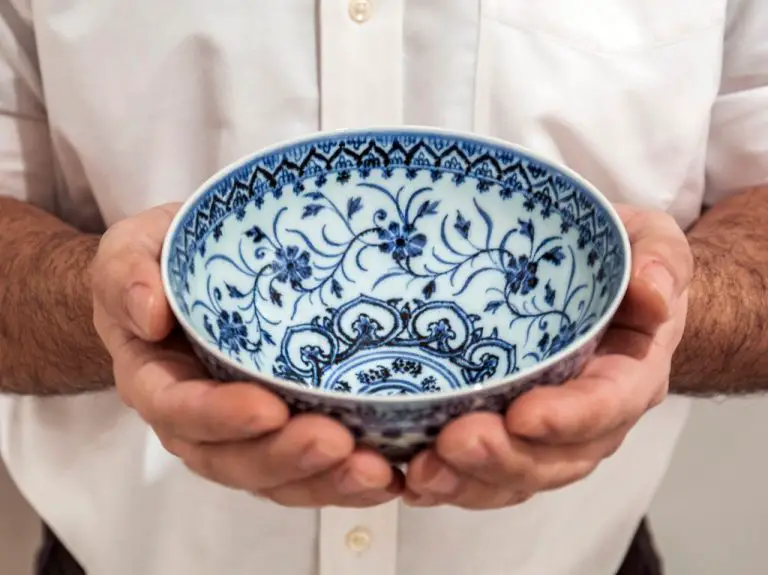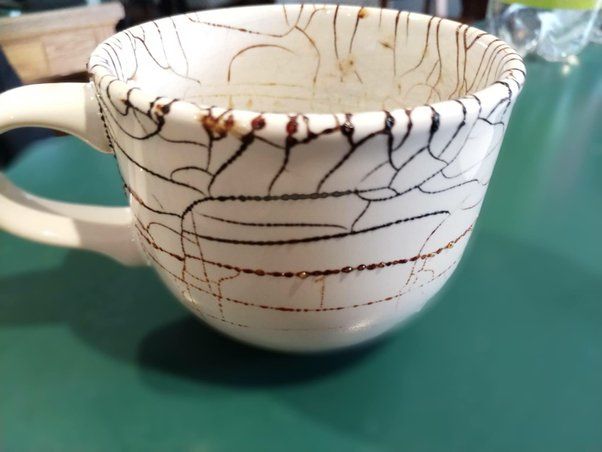Where Do Potters Get Their Clay?
Potters obtain clay from several different sources in order to create their ceramic works. While in the past, potters had to dig and process their own clay, most potters today purchase processed clays from commercial manufacturers or local suppliers. However, some potters enjoy sourcing their own clay from deposits near where they live. There are advantages and disadvantages to each method of obtaining clay that potters must consider when starting a project.
Local Clays
Using locally sourced clay has many advantages for potters. Gathering clay locally eliminates transportation costs and carbon emissions from shipping. It also provides a direct connection to the geology and environment of the potter’s own region. When using local clay, potters gain intimate knowledge of its characteristics and learn to work with its natural properties. Locally sourced clay often has distinct colors and textures that reflect the local landscape. This gives pieces made from local clay a unique sense of place. Additionally, digging one’s own clay can be an enjoyable outdoor activity and a way to explore the local countryside. Using indigenous clays helps potters create works that feel rooted in their home region.
Commercial Clays
Potters can purchase commercially prepared clays rather than digging their own. These clays are mined from deposits and processed to achieve certain characteristics that make them suitable for different types of pottery.
Two of the most popular commercial clays are stoneware and porcelain. Stoneware clays are often mixed clays, containing varying proportions of ball clays, kaolin, fireclays and fluxes. They are fired at high temperatures (1200°C to 1300°C) and produce durable, watertight pottery. Stoneware clays can be purchased as moist, pugged clay ready for throwing on the wheel. Popular brands include Highwater Clays and Laguna.
Porcelain clays contain very pure kaolin clay and fire to a smooth, white, translucent finish. The kaolin content makes porcelain resistant to moisture and gives it high plasticity for throwing thin-walled pieces. However, porcelain requires very high firing temperatures up to 1400°C. Well-known porcelain clays include Grolleg kaolin and Tile #6 porcelain.
Digging Your Own Clay
Some potters like to dig and process their own clay rather than buying it commercially. This allows them to have full control over the clay’s characteristics and ensures a consistent local supply. Digging clay essentially involves prospecting for clay deposits, excavating the clay, and then processing it for use.
To dig your own clay, the first step is locating a sizable deposit of clay on your property. The best places to look are near bodies of water or low-lying areas where water drainage is poor. Using a shovel, you can dig test holes about 2-3 feet deep to determine if clay is present. Good clay will have a thick, dense, and sticky texture when wet. It may range in color from light grey to orange or reddish brown.
Once a workable seam of clay is found, larger excavation can begin. This may be done with hand tools or using heavy machinery for larger operations. The clay should be extracted in chunks or slabs and carefully transferred to avoid unintended mixing with other soils. Any debris like rocks or roots should be removed at this stage.
The raw clay freshly dug from the deposit will need further processing before it can be used for pottery. Processing steps typically include breaking up large chunks, kneading or wedging the clay, and leaving it to weather or age. This prepares the clay for throwing, handbuilding, or other forming techniques.
Digging your own clay can allow potters to closely tune the clay properties for their personal needs and style. However, it requires suitable clay deposits onsite and is labor intensive. Many potters opt to purchase processed clays from commercial suppliers for convenience.
Clay Deposits
Clay deposits are formed from the chemical weathering of feldspar-rich rocks like granite, rhyolite, and gneiss over millions of years. Water flows through tiny cracks in the rocks, slowly dissolving the feldspar minerals and carrying away the dissolved material. As this process continues, microscopic clay particles build up in layers along with other weathering products like sand and silt.
The composition of clay deposits depends on the original rock type and the environmental conditions during weathering. Most clay contains a range of clay minerals like kaolinite, illite, and smectite. These plate-like clay minerals give clay its plasticity when mixed with water. Clays also contain non-clay minerals like quartz, feldspar, and mica inherited from the original rocks. The relative proportions of the different minerals determine the clay’s properties and suitability for pottery.
Clay Harvesting
Potters have traditionally harvested their own clay directly from the local environment. Before modern tools and commercial clay suppliers, potters would dig clay by hand using basic tools like shovels, picks, and rakes. The clay deposits were often located near rivers, lakes, or other water sources, which allowed the clay to be more easily accessed and transported.
In some cultures, clay harvesting became very sophisticated, with clay miners digging deep pits and underground chambers to extract the highest quality clay. Techniques like puddling, decanting, and refining allowed miners to process the raw clay at the site to remove impurities.
Today, while some potters still dig their own clay, most rely on commercial mining operations to extract and process clay in bulk. Front-end loaders, bulldozers, and dump trucks are used to remove large volumes of clay from open-pit mines. The clay then goes through an industrial process to refine it for use by potters and other industries. Some of the main steps include crushing, screening, blending, dewatering, and drying before it’s packaged for shipping.
So whether dug by hand or delivered by a truck, the clay used by potters ultimately comes from deposits in the earth. Advances in mining technology have made it easier to harvest massive quantities of high quality clay for potters around the world.
Clay Processing
Once clay has been harvested, it goes through several steps to prepare it for pottery use. Here are some of the main stages of clay processing:
Drying: Clay direct from the ground contains a lot of moisture, so it needs to be thoroughly dried before further processing. Clay is spread out in thin layers and allowed to air dry over several weeks. The drying process removes excess water.
Grinding: Dried clay is put through a pug mill that contains two metal rollers. As the clay passes between the rollers, it is squeezed and ground into a fine consistency. This helps achieve an even texture.
Sieving: After grinding, the clay goes through sieve screens to remove rocks, roots, and other debris. The sieves sort the clay into different grades based on particle size.
Blending: Clays from different sources are often blended together in specific ratios to achieve desired characteristics like color, plasticity, firing temperature, etc. The blend is then mixed thoroughly to homogenize it.
Some additional steps may include: aging or fermenting the clay, adding clays or minerals as flux, and doing pH tests. With processing complete, the clay is then ready for potters to use in their artworks.
Clay Characteristics
The properties of clay determine how it can be used by potters. Some key characteristics to evaluate are plasticity, shrinkage, and firing capabilities.
Plasticity refers to how easily clay can be shaped and sculpted. More plastic clays are flexible and malleable when wet, while less plastic clays are harder to work with. Plasticity is affected by the mineral content and particle size of the clay.
Shrinkage determines how much clay reduces in size from wet to dry, and through the firing process. Clay bodies with high shrinkage may crack more easily. Predictable shrinkage rates allow potters to plan and design accordingly.
Firing capabilities indicate the temperatures at which clay matures and becomes stoneware. Lower fire clays may only reach earthenware temperatures, while higher fire clays are used for stoneware and porcelain. The maturation temperature affects durability, strength, and aesthetics.
Testing and analyzing characteristics allows potters to select the optimal clay types for their desired outcomes, techniques, and firing methods.
Storing Clay
Properly storing clay is crucial for keeping it usable for pottery projects. Here are some tips for preserving your clay:
Keep unused clay in an airtight plastic bag or container. This prevents the clay from drying out. Squeeze out excess air before sealing to minimize air exposure.
Store clay in a cool area, ideally 65-75°F. Avoid temperature fluctuations. Heat and cold can negatively impact clay’s consistency and workability.
Consider storing clay in the refrigerator but not freezer. The cold helps retard spoilage but avoid freezing as it can damage clay structure.
Keep different types of clay separate, as clays can pick up smells and moisture from each other. Label clay containers with clay type and open date.
Clean clay tools and workspace before storing clay. Bits of dried clay, debris or dust can contaminate fresh clay.
Inspect stored clay periodically and throw away any that smells bad, feels excessively hard or shows visible mold.
Limit air exposure when taking clay in and out of storage to prevent drying. Don’t take out more than you plan to immediately use.
If clay does start to dry out, add small amounts of water and knead thoroughly to rehydrate. Don’t add too much water or overmix.
With proper storage methods, most clays can be kept for 6 months to 1 year before drying out or spoiling.
Conclusion
In conclusion, potters can obtain clay from a variety of sources. Locally harvested clays allow potters to gather clay on their own from deposits near where they live. Commercial clays provide convenience and consistent properties for production pottery. With some effort, potters can also dig and process their own clay. The choice of clay source depends on factors like desired clay properties, production volume, and personal preference. Regardless of origin, knowing the characteristics of the clay body is critical for successful pottery making. Thoughtful clay selection and preparation helps potters manipulate clay into stunning creations.


